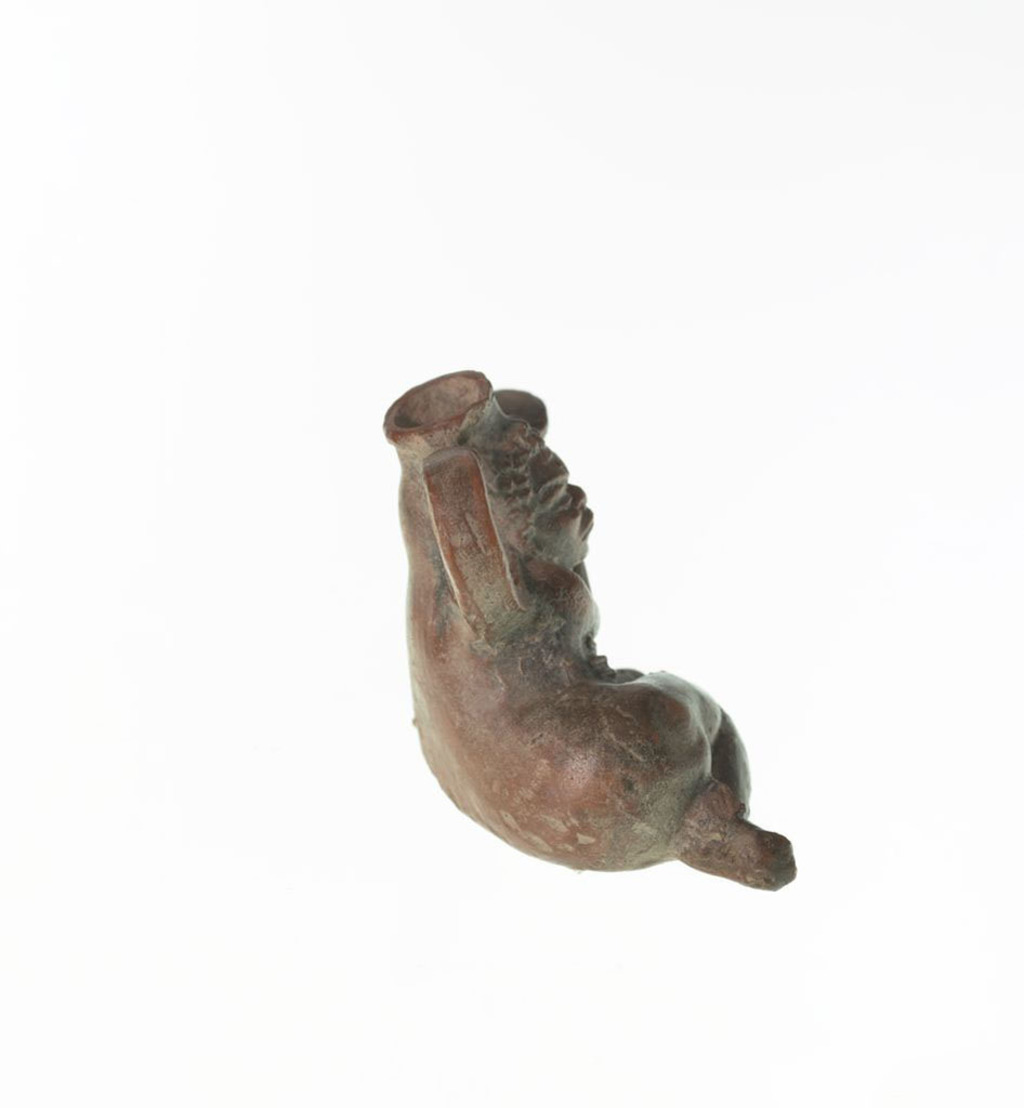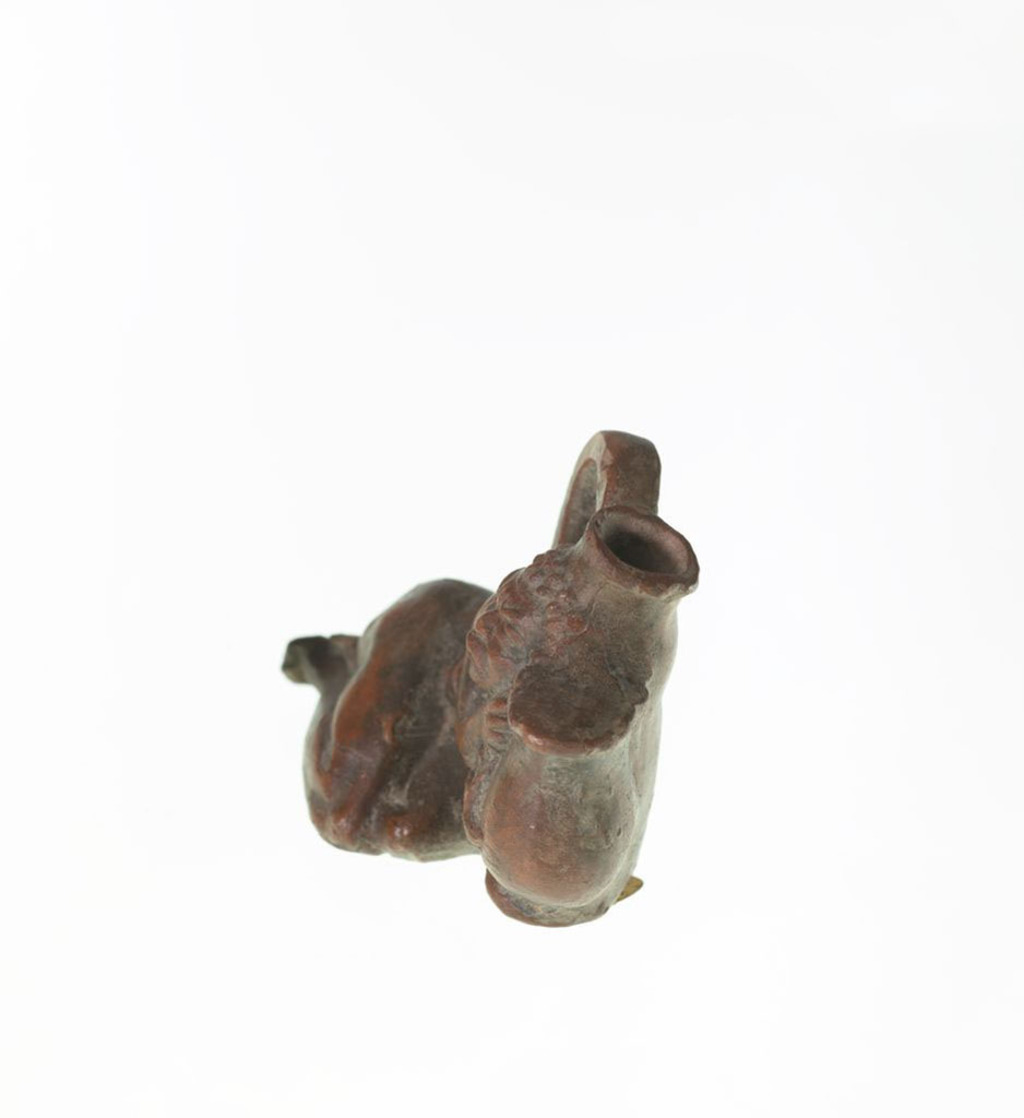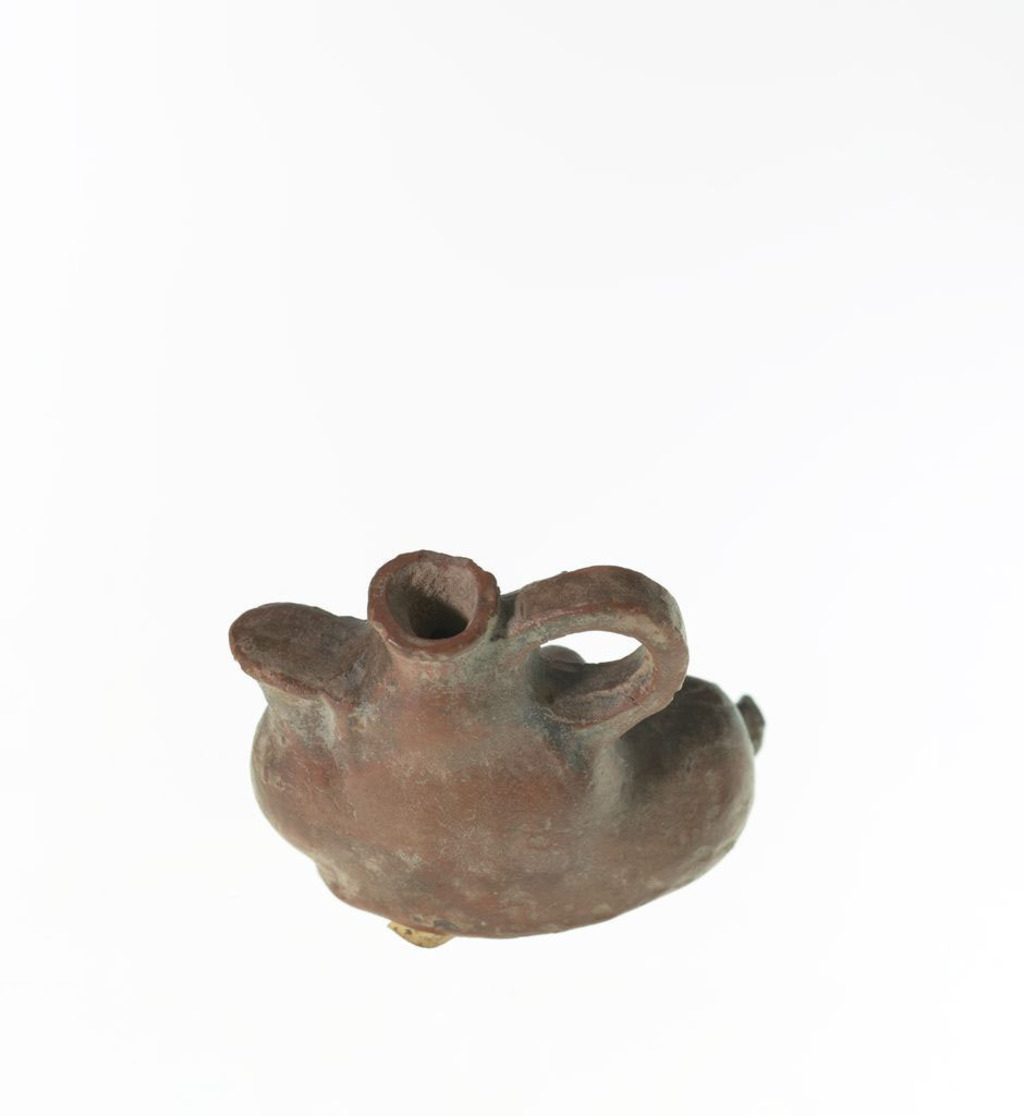This small vessel comes from Hellenistic or Roman Egypt between 300 BCE and 300 CE. Oil vessels in the form of a human figure were popular containers for scented oils that were exported around the Mediterranean. This particular oil container is of a variety known as askos and takes the shape of a semi-reclining Black African woman, sometimes identified by scholars as a Nubian. The woman is depicted with a wide nose and short curly hair. Her eyebrows are furrowed, emphasizing the lines on her forehead. The wrinkles and heavy cheeks suggest she is an older woman. At the top of her head is an opening in the form of a crown (polos). A small loop handle is included over her right shoulder.
In the past, the exaggerated facial features of the woman have led this piece and others to be classified as “grotesques.” Grotesques, a problematic aesthetic term, refers to a broad and diverse group of figures and anthropomorphic vessels with embellished or distorted features. The identity of the figures is often unclear, especially in the case of heads broken from the body, of which there are several examples in the Menil Collection.
The woman here leans against an amphora (storage jar) with her eyes closed, as if she is resting from her task for a moment. Her left hand is hugging her right side and her feet cross slightly. Much of her nude body is covered modestly by her arm and body position. In her right hand, she holds a small aryballos (oil vessel) and a strigil (a curved device used to remove oil from the skin), items associated with bathing in the ancient world. The nudity, amphora¸ aryballos, and strigil together may indicate her status as a servant or an enslaved bathing attendant.
Slavery in the ancient world was a pervasive phenomenon, although exact numbers are unknown, and it was not a consistent practice from region to region. People were often enslaved as the result of war, piracy, debt, or heritage. Some slaves were associated with particular landholdings, belonging to sanctuaries or complexes, or were considered the property of an individual. In some areas and periods, enslaved people earned wages or could be freed, but the majority were subject to harsh working conditions. Anthropomorphic vessels representing enslaved people may have been a status symbol for the vase owners, because of both the vessel’s expensive contents and the representation of the enslaved figure.





